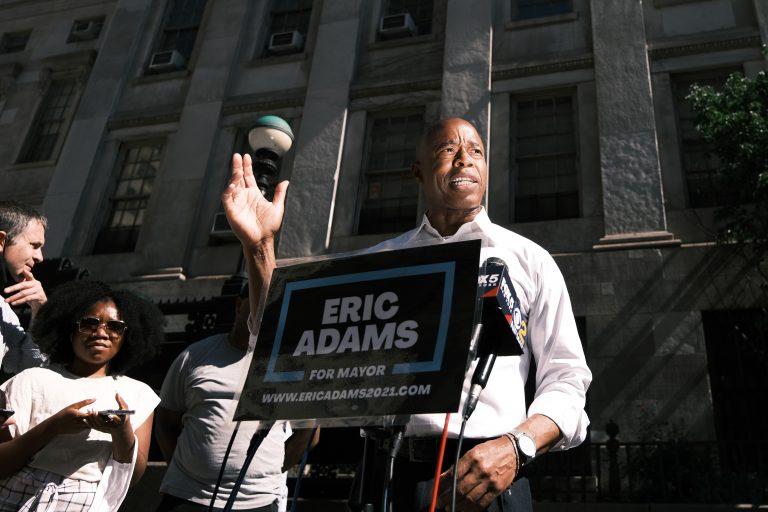The New York mayoral race spiraled into chaos on Tuesday, June 29, when 135,000 test-run ballots were inadvertently included in the preliminary total, creating confusion and undermining confidence in the city’s election process.
The New York City Board of Elections (BOE) published preliminary results on its website on Tuesday indicating Eric Adams, a retired N.Y. City police officer, had garnered 51.1 percent of the approximately 920,000 votes cast. Adam’s immediately contested the results after the BOE said that they had only tallied around 800,000 in-person votes.
“The vote total just released by the Board of Elections is 100,000-plus more than the total announced on election night, raising serious questions,” Adams said in a statement.
“We are aware there is a discrepancy in the unofficial RCV round by round elimination report. We are working with our RCV technical staff to identify where the discrepancy occurred. We ask the public, elected officials and candidates to have patience.” stated the BOE in a Tuesday tweet.
A BOE spokesperson said on Tuesday that the 135,000 “dummy ballots” had been inadvertently included in Tuesday’s totals, causing the discrepancy. The test ballots had not been cleared from the system after a mandatory test run had been completed. The extent to which the dummy ballots affected the count remains unclear but new tabulations are expected Wednesday.
Success
You are now signed up for our newsletter
Success
Check your email to complete sign up
As of now, Kathryn Garcia, the city’s former sanitation commissioner, has garnered 48.9 percent of the vote with Adams, who campaigned on public safety, leading by approximately 16,000 votes. Maya Wiley, a lawyer, professor and civil rights activist who also served as a counsel to New York City mayor Bill de Blasio, lost her second place standing to Garcia.
“The Board of Elections’ release of incorrect ranked-choice votes is deeply troubling and requires a much more transparent and complete explanation,” Kathryn Garcia stated, adding that “every ranked-choice and absentee vote must be counted accurately so that all New Yorkers have faith in our democracy and our government.”
Adding to the confusion, there are still an estimated 124,000 absentee ballots that have yet to be counted, leaving the tight race far from decided.
The 124,000 absentee votes are scheduled to be counted by Tuesday, July 7. State law allows absentee ballots postmarked on the day of the primary to be counted.
De Blasio calls for ‘complete recanvass’
The confusion led Bill de Blasio, New York’s current mayor, to call for a “complete recanvass” of the city’s mayoral results after the BOE retracted their published results on Tuesday.
“Yet again, the fundamental structural flaws of the Board of Elections are on display” stated the incumbent mayor in a statement adding, “there must be an immediate, complete recanvass of the BOE’s vote count and a clear explanation of what went wrong. The record number of voters who turned out this election deserve nothing less.”
De Blasio, a Democrat, has been mayor of New York since January 1, 2014, serving as the city’s 109th mayor. Prior to his two-term stint as mayor, de Blasio served as a New York City Public Advocate from 2010 to 2013. De Blasio was barred from running for a third term due to term limits.
Ranked-choice voting system
This is the first election that New York has used the ranked-choice voting system, also called “instant runoff voting” which is adding to the confusion.
Of the 13 candidates, voters were asked to choose their top five candidates in order. Should one candidate be the first choice of a majority of voters — more than 50 percent — then that person wins the race, just like in a traditional election. However, if nobody garners a majority of votes, ranked choice analysis is used.
Ranked choice analysis is done in rounds. In each round, the candidate in last place is eliminated. Votes cast ranking that candidate first are then allocated to those voters’ second choices.
That process repeats until there are only two candidates left and the one with the most votes wins.
















